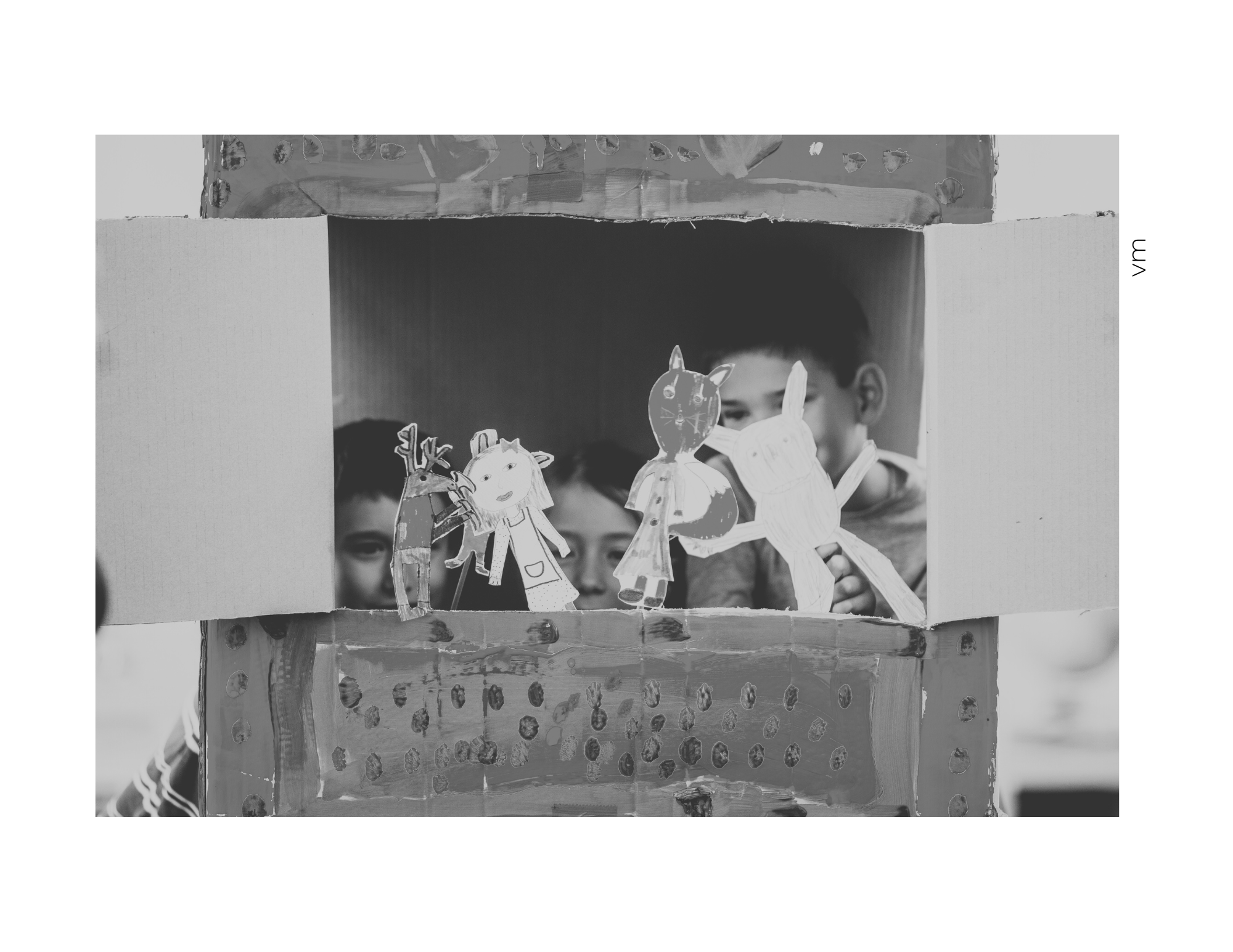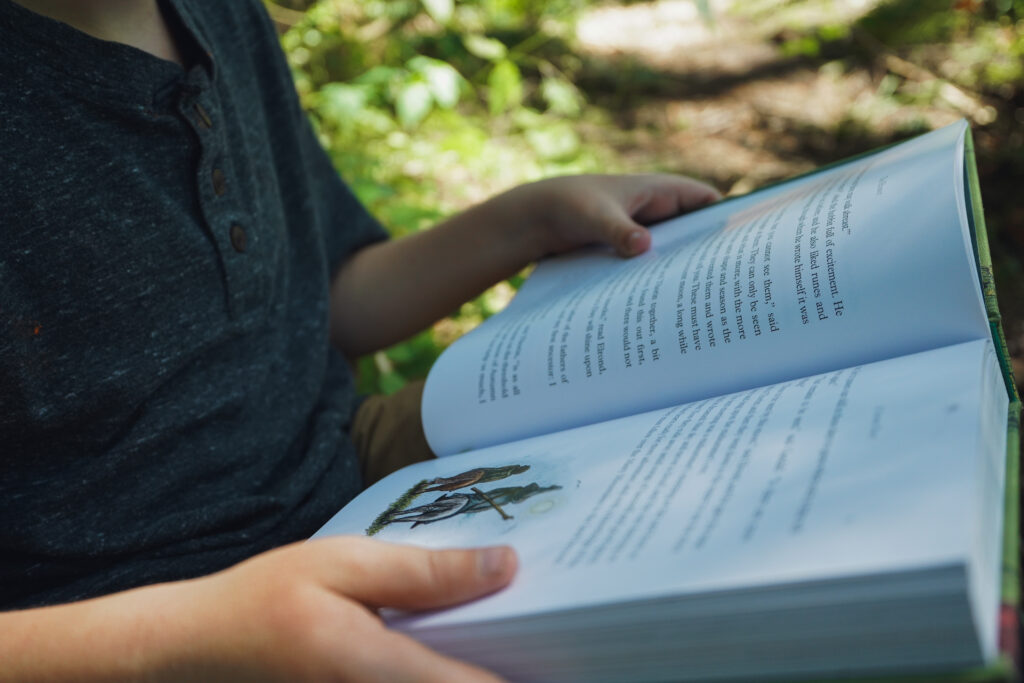
Writing is one of the most essential skills a child can develop. It’s the bridge between thought and communication, creativity and clarity. And yet, how we teach writing—especially in the early years—varies dramatically depending on the educational philosophy we follow. From the structured models of classical education to the child-led nature of unschooling, each approach holds a distinct view on when and how children should begin to write. Add in how handwriting development gets jumbled in with writing, and it can feel complicated.
In this article, we’ll explore how major educational philosophies—Classical, Charlotte Mason, Montessori, Traditional, and Unschooling—approach writing instruction. Then, we’ll go over how Discovery Grove Learning Co, an eclectic homeschool curriculum designed for 1st through 3rd graders, blends these philosophies with modern project-based learning. The hope is to arm you with understanding the different philosophies so that you can approach teaching writing in the way that feels best for you and your family.
Let’s begin where all good writing starts: with purpose and process.
Classical Education: Mastery Through Structure
In classical education, writing is taught as a step-by-step development of language mastery, aligned with the stages of the Trivium: grammar, logic, and rhetoric. Children begin by learning the rules of language directly and systematically—grammar, syntax, punctuation, and sentence structure are taught explicitly before they are asked to write independently. Writing emerges from this solid foundation, so students can compose with clarity, accuracy, and purpose once the mechanics are secure. Learn more…
Structure & Approach:
Early writing focuses on memorization, copywork, and dictation, not for imitation alone but as a deliberate practice in applying the rules of language. Students study sentence patterns, punctuation, and the structure of well-formed paragraphs, gradually internalizing how language works. Narration is used to check comprehension, but original composition is introduced only after students have mastered language form, typically in upper elementary or middle school.
Narration is the process in which students tell back what they’ve just heard or read. They don’t need to write a summary, fill out a worksheet, or take a quiz. Simply think through and retell what they’ve absorbed.
Composition is writing. It is the process of constructing original sentences and paragraphs with purpose and clarity.
Expectations:
Writing begins with mastery of the building blocks of language rather than personal expression. Early exercises are highly structured, and the emphasis is on correctness, clarity, and precision. Once students are confident in these skills, they progress to composing original sentences, paragraphs, and essays with purpose and clarity.
Strengths:
- Builds strong technical writing skills
- Emphasizes exposure to great literature
- Highly systematic
Limitations:
- Can delay student ownership of writing
- Less room for creativity in early years
Charlotte Mason: Writing as Relationship
Charlotte Mason believed that children learn best from living books and through meaningful narration. Her approach to writing is built on exposure to rich literature and careful listening, allowing children to develop their own language skills naturally rather than through formal rules. Writing grows out of reading and personal engagement with ideas, making it an organic, child-led process. Learn more…

Structure & Approach:
Students begin with oral narration, retelling in their own words what they have heard, and then gradually move to written narration. Copywork and dictation are practiced daily, emphasizing quality and thoughtful attention rather than volume. Formal composition is introduced later, typically around age 10, but writing is always closely connected to reading and reflection.
Copywork is when a child writes out a passage from a high-quality text to internalize spelling, punctuation, grammar, and style by imitation.
Dictation is when the child writes down a passage as it is read aloud, reinforcing listening skills, attention to detail, and the natural patterns of language.
Expectations:
Grammar and mechanics are absorbed through exposure to good writing, rather than taught explicitly. Early writing is brief, meaningful, and connected to ideas, with a focus on the child’s personal response and understanding rather than technical perfection.
Strengths:
- Gentle and developmentally aligned
- Builds deep comprehension through narration
- Uses real literature as models
Limitations:
- Delayed formal instruction may frustrate goal-oriented families
- Less focus on formal structure early on
Montessori: Writing Through Discovery
Maria Montessori viewed writing as a natural outgrowth of a child’s development and environment, believing that children could often express themselves in writing before they could read fluently. In a Montessori setting, writing emerges spontaneously through hands-on exploration and sensory experience, not through rote instruction. Learn more…

Structure & Approach:
Writing begins with pre-writing activities that build fine motor control and connect movement to meaning. Children trace sandpaper letters to feel the shape and sound of each letter, and use the movable alphabet to build words before ever holding a pencil. This focus on physical and sensory preparation allows writing to develop organically and purposefully—when a child is ready, they begin to write because they have something to say. Creative expression is encouraged from the beginning, and grammar is introduced through color-coded, tactile materials that make language concepts concrete and accessible.
Expectations:
Children engage with writing as part of their daily exploration of the world, using it as a tool for communication and discovery. Spelling and grammar are learned experientially through repeated, meaningful use rather than drills or worksheets. Writing is treated as a form of expression and self-construction, not as a separate academic subject to master in isolation.
Strengths:
- Fosters early and joyful expression
- Makes grammar hands-on and visual
- Builds independence and ownership of learning
Limitations:
- Provides less formal structure than some parents prefer
- Linear progress in writing can be harder to track
Traditional Public School: Skill-Building and Standardization
In traditional school settings, writing is taught through a structured, standards-based curriculum designed to meet grade-level expectations. Students are introduced early to various writing types—narrative, opinion, and expository—and their work is evaluated using rubrics, benchmarks, and standardized assessments. Learn more…
Structure & Approach:
Writing is treated as a formal subject, divided into units that align with state or national standards. Grammar, punctuation, and spelling are taught explicitly and tested regularly. Instruction often includes worksheets, peer editing, and timed writing prompts, with an emphasis on meeting specific objectives and demonstrating measurable progress.
Expectations:
Students are expected to show writing proficiency according to defined benchmarks. Work is evaluated for structure, coherence, clarity, and correctness, with grades reflecting mastery of specific skills rather than personal growth or creativity.
Strengths:
- Provides clear expectations and consistent pacing
- Emphasizes revision, editing, and accountability
- Prepares students for academic assessments and formal writing tasks
Limitations:
- Allows less flexibility for creativity and individual pace
- Can prioritize output and evaluation over process and enjoyment
Unschooling: Writing on the Child’s Terms
Unschooling families reject formal writing instruction, trusting that children will write naturally when it becomes meaningful to them. Writing emerges as an extension of play, curiosity, problem-solving, and storytelling, developing through authentic experiences rather than planned lessons. Learn more…
Structure & Approach:
There is no set structure or curriculum. Writing might appear in comic books, letters, journal entries, role-playing games, or collaborative stories. Grammar and spelling are learned incidentally, as children encounter and use them in real contexts. Parents act as facilitators, offering tools and support when a child shows interest but avoiding imposed lessons.
Expectations:
There are no fixed milestones or benchmarks. Progress is self-directed and varies widely between children. The focus remains on autonomy, intrinsic motivation, and joy in expression, rather than on measurable outcomes.
Intrinsic motivation is when a child is driven to learn or create because it is personally meaningful or enjoyable, rather than for rewards or external pressure.
Strengths:
- Keeps writing joyful and personally meaningful
- Rooted in real-world purpose and authentic communication
- Highly individualized and child-led
Limitations:
- Progress can be unpredictable or uneven
- Gaps in grammar and formal structure may appear without intentional reinforcement
- Can be challenging for parents, as it requires continual observation, responsiveness, and trust—it’s often mistaken for a hands-off approach, but in reality demands consistent engagement and awareness
Project-based Learning: Writing with Purpose
Project-Based Learning (PBL) centers around the idea that students learn best when writing and literacy are connected to real-world projects and purposeful work. Writing is not treated as a separate subject but as a tool for thinking, communication, and creation within meaningful, hands-on experiences. Learn more…

Structure & Approach:
Writing emerges naturally from the context of each project. Students may write research notes, journals, proposals, stories, or reflections connected to what they are building, exploring, or solving. Grammar and composition are taught in context, as students refine and edit their work to communicate ideas effectively. In true project-based learning, projects are determined and driven by the student as authentic interactions with the ideas they are processing and learning. The parent acts as a coach and guide, helping students plan, draft, revise, and present their work for an authentic audience.
Expectations:
Students are expected to write with purpose and clarity, using writing to document learning, express understanding, and share discoveries. The focus is on communication and process over rigid form, with assessment emphasizing growth, reflection, and real-world application.
Strengths:
- Makes writing authentic, purposeful, and relevant
- Naturally integrates research, creativity, and critical thinking
- Encourages collaboration and ownership of learning
Limitations:
- Requires strong guidance and planning to ensure academic balance
- Grammar and formal writing skills may need intentional reinforcement outside of project contexts
So Where Does Discovery Grove Learning Co. Fit?
At Discovery Grove Learning Co., we believe writing should be meaningful, playful, and gently scaffolded in the early grades. We draw inspiration from across these educational philosophies while adapting them to meet the developmental needs of 1st through 3rd graders. Here’s how we bring it all together:
Playful, Project-Based Writing
Writing in Discovery Grove Learning Co., starts with joy and purpose. In every literature study unit, students engage with creative writing prompts from the very beginning—crafting character descriptions, imagining new settings, or rewriting parts of their anchor texts from a different point of view. Writing is a part of how students play with ideas.
About halfway through the unit, they begin working through the full writing process: brainstorming, drafting, revising, editing, and publishing. This culminates in a meaningful “big” project. For example, in our Hobbit unit, students create their own illustrated storybook that echoes the hero’s journey adventure they’ve encountered in Tolkien’s tale. This gives their writing purpose. They are creating something meaningful, which is driven by their ideas. Projects in our studies are given guidelines and tools, but then left for the students to figure out what they need and seek out how to do it. That’s the beauty of project-based learning! As they get more practice working as an independent learner, projects become increasingly less directed.
Anchored in Rich Literature

Like Charlotte Mason, we believe in the power of living books. Each Discovery Grove Learning Co. Art of Language unit is built around a long-form anchor text and coordinated picture books that demonstrate literary devices, structure, and theme. Our Discovery Science, Timewoven Histories, and Art of Home courses all lean into story-based learning, while also commiting to using excellent non-fiction texts as well. Students don’t learn writing in isolation, they absorb it through exposure to great writing.
Gentle Grammar and Copywork
We incorporate Montessori-inspired grammar instruction using tactile tools and visual symbols that bring parts of speech to life. Copywork and dictation reinforce grammar and punctuation in a gentle, rhythmic way, without workbooks or drills. While it might feel simpler to teach grammar through worksheets, bringing the concepts off the page allows students to engage their senses, think critically, and connect language to real-world use.
Learning by Doing
In the Discovery Grove Learning Co. method, writing is not just a subject; it’s a tool for thinking, creating, and sharing. We follow the project-based learning philosophy, giving students real reasons to write: a story to tell, a poem to perform, a book to gift, or a lesson to teach. When writing has purpose and audience, children see themselves as authors, thinkers, and creators, not just students completing an assignment.
When you trust your students to be problem-solvers and investigators, writing becomes a natural part of the learning process. They write to explore questions, record discoveries, or propose solutions, making language a bridge between ideas and action. Through hands-on projects, storytelling, and authentic experiences, students practice grammar, organization, and clarity in context, without artificial exercises.
Over time, this approach cultivates confidence, curiosity, and ownership, as children learn that their words have power and meaning. Writing becomes not just a skill to master, but a way to express, connect, and impact the world around them.
Eclectic and Intentional
While Discovery Grove is eclectic in its sources, it is not scattered. We combine methods with intention—drawing from what works, adapting it for young learners, and building confidence step-by-step. Writing isn’t delayed until perfection. It’s done gently, and it’s done with purpose.
Final Thoughts: There’s No One “Right” Way—But There’s a Right Fit
Each philosophy has something valuable to offer. The classical model builds precision, Charlotte Mason fosters connection, Montessori empowers independence, traditional school ensures structure, and unschooling preserves joy. But homeschooling allows you to weave the best of all worlds.
At Discovery Grove Learning Co. , we’ve created a space where writing is both structured and soulful, academic and adventurous. It’s a place where 7-year-olds proudly call themselves authors—not someday, but today.
Let writing grow like a grove: wild in imagination, rooted in meaning, and shaped by purpose.